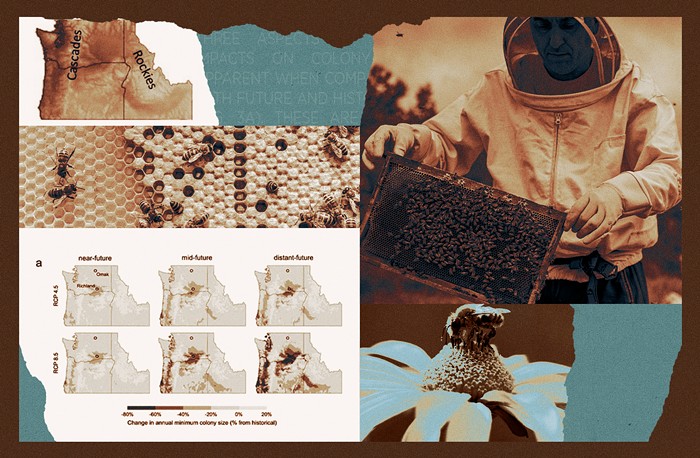
Our future moon colony, built in 2096 in the Shackleton Crater, will generate oxygen and water from processed moon dust, will be powered by people pedaling elliptical bicycles, and will have “a church, for church stuff.” These are visions of the Washington students participating in the regional Future Cities competition, established to generate interest in STEM careers. This year’s mission: Design a city on the moon.
This weekend, a team of judges will review entries from around the state, with a handful from Idaho and Oregon, and declare a winner. That school’s team will go on to compete at the national level (why is this the same basic structure as a season of Glee???); but whether they win or not, each team is fostering an interest in engineering that may one day save us from the planet’s rapidly approaching doom.
“These are middle school kids, sixth to eighth grade, so much of this content is new to them,” says Karen Pavletich, regional coordinator for the competition. “So this could be their first touchpoint with an engineering professional.”
Some of the students’ innovations, like hoverboards and replicators, are perhaps a bit further past the horizon of what is technologically possible to predict. But others are firmly grounded in science, thanks to the detailed resources provided to participants.

Handouts direct the students to consider real-life challenges that engineers are accustomed to confronting: Sustainable water systems; allocation of energy; governing structures; and the professions required to maintain a system once it’s in place.
Delightfully, the student materials also come with instructions for bypassing their schools’ firewalls: A component of the competition includes SimCity, which many schools have blocked because administrators don’t understand that games are educational. It’s never too early to learn how to hack poorly-implemented institutional security systems, kids!
Innovations created by students teams include cat cafes for societies where technological limitations prevent private pet ownership; harvesting methane from livestock with cow-sized diapers; and a city that implemented a social credit system that rewards good deeds, not unlike the one currently being implemented in China. One team developed a guild system to represent different professions. Regarding social justice, a team in Sequim “eliminates the issue with a catapult.”
Environmental protection and sustainability was a high priority for the student teams. “All of the teams wanted to be sure that they were not ‘messing up’ another world,” wrote Richmond teacher Cheryl Water.

And speaking of environmental sustainability: The contest is sponsored by companies like Shell Oil Company and is a project of DiscoverE, an engineering education program led by ExxonMobil and weapons manufacturer Northrop Grumman, among others. These are the companies whose contributions to war and climate change may one day necessitate humanity’s escape from this decaying planet.
But those are concerns for days that remain unwritten. For now, kids of today are tasked with envisioning a better tomorrow while navigating a pandemic in our current ominous times. They’ll face a final panel of judges this weekend, and having reviewed some of the very imaginative entries, I can confirm that it’s going to be tough to pick a winner. The future, as always, remains obscure.















